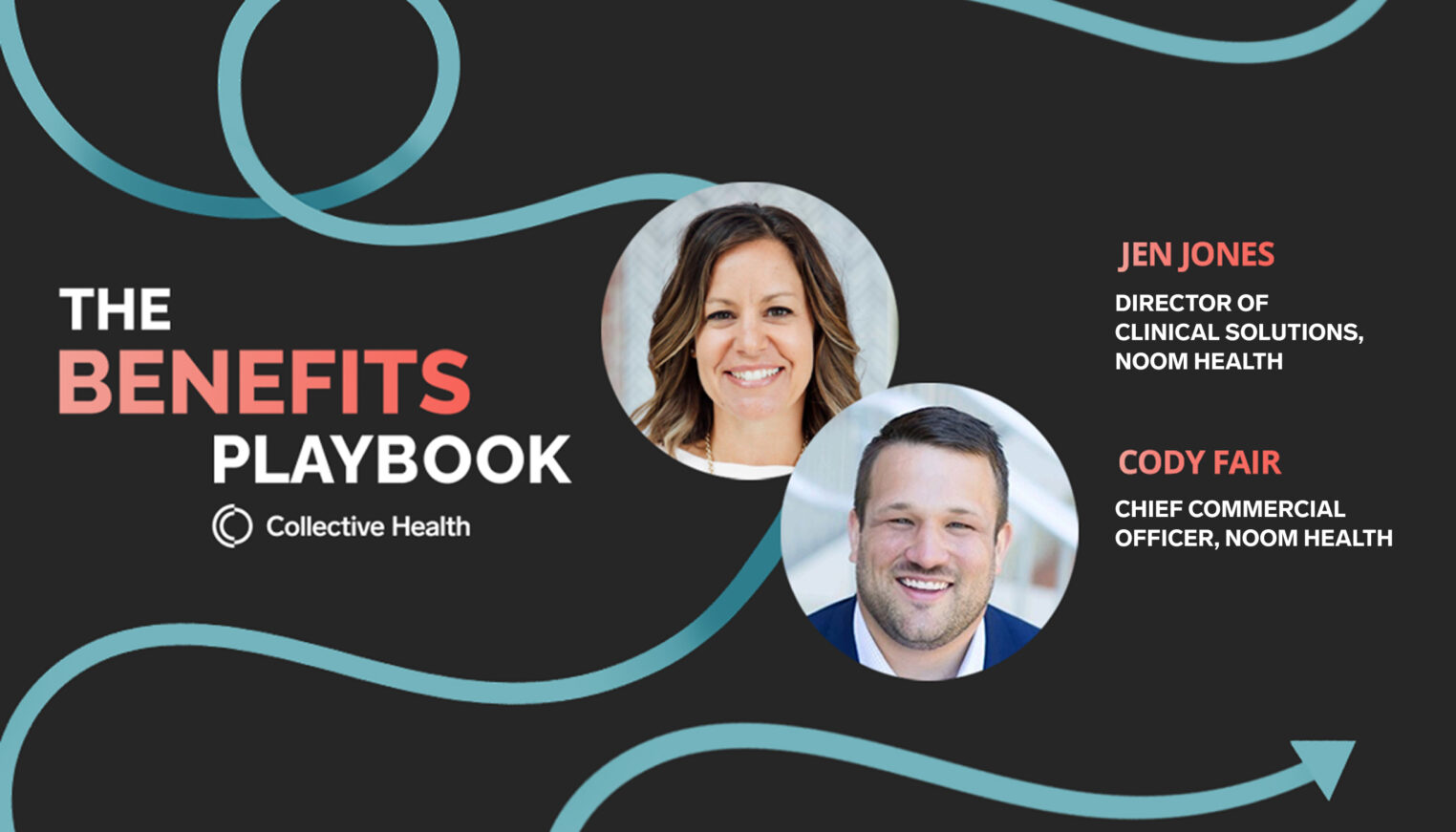At Collective Health, we’re committed to helping our clients and their employees understand, navigate, and utilize their health benefits–whether you’re searching for a local in-network provider or you’re planning for upcoming care.
This article is meant to help trans, non-binary, and gender diverse people (and their families!) explore and understand more about your benefits and coverage. You’ll find tips and tricks for finding supportive primary and mental health care, get help with understanding your options for gender-affirming care, and encouragement as you navigate a messy system.
And let’s face it–the US healthcare system is a bit of a mess. It’s confusing, fragmented, and not built to serve those who may need it most! We all could use an advocate in our corner, so remember that we are always here to help. We get it. We got you. And we hope this guide makes you feel like you have a copilot with you along every step of your journey. You are not alone!
Everybody’s journey is different
A gender transition is the process some people may go through to live as the gender with which they identify, rather than the sex assigned to them at birth. People have a range of different experiences, options, and decisions around transitioning. Transitioning through gender-affirming care can involve medical treatment and hormones, changing your name and pronouns, altering your appearance and how you dress, coming out to your friends and family, or whatever other permutations that you choose.
However someone experiences or chooses to transition is a personal decision. Whether you are just beginning to explore your own options, or you are so far along on your journey that you know your next procedure’s code by heart… we’re here to give you the support that we can.
First things first
Good health is about so much more than treating an illness, it’s about living well. Let’s make sure you’re laying a solid foundation for your own wellness. Squeeze that juice outta your coverage!
Find a supportive primary care provider
It’s super important to have a primary care physician (PCP), physician’s assistant, or nurse practitioner that you trust and feel comfortable with. Having a PCP is a great way to make sure that your overall health needs are taken care of. If you’re on a gender-affirming care journey, your PCP will also be your first point of contact when you’re getting started.
When trying to find the right primary care provider, you may want to ask if they have experience working with nonbinary or transgender folks, advocate that they use your pronouns and preferred name, or tell them that you’re looking for a gender-affirming provider.
Find mental health support
A supportive mental health provider can also provide ongoing support for you along your journey. Depression, anxiety disorders, and substance use are common challenges, and a qualified therapist or psychiatrist can help. Additionally, if you’re on a gender-affirming care journey, you’ll need at least one referral letter from a mental health provider to be able to access certain surgeries that are covered by your health benefits.
Don’t forget about family building and fertility support
Transgender and gender diverse people have just as many different questions, perspectives, and ideas about family building and fertility as cis-people do. Ask your provider about the effects of your transition on your fertility and your options around fertility preservation and reproductive health.
“What works for me might not work for another person. It’s a very unique journey to everybody and it’s different for everybody.”
Dan*, gender diverse person
Navigating a messy system
We all need a little Healthcare 101. Here is some helpful background information to help guide you through the healthcare system as you navigate your care.
In-network vs out-of-network considerations
Going to an in-network provider or facility will often cost you less because they can only charge what the insurance company determines is a reasonable price. Out-of-network providers do not have to follow a network’s rules, and they can charge you more than an in-network provider would. Collective Health’s Get Care tool lets you search for in-network doctors, specialists, pharmacies, and facilities—no matter where you are in the US.
Prior authorizations
Many procedures that may be a part of a gender-affirming care journey require prior authorizations. Think of them as permission slips from your health plan. Once you have your prior authorization, you and your provider will know that your care is covered. It’s up to your provider to get prior authorization from your insurer, but it’s ok to check in with your doctor to make sure this has happened.
Sometimes better care is farther from home
Depending on where you live, you might have trouble finding providers in your area. If you are just starting your journey with gender-affirming care, it might be worth traveling to start a treatment plan with an expert. Once you have started with a provider and have a plan that is working for you, you can consider switching to telemedicine visits or a local provider.
Some plans offer reimbursement for travel expenses related to gender-affirming services. If you’re a Collective Health member, you can find these details on the Coverage page of your Collective Health account. And if you have questions about qualifying expenses and exclusions, ask your Care Navigation team.
Dealing with denials
If you get a prior authorization procedure denial, it can feel incredibly frustrating. But it’s not the end of the road! You have the right to work with your provider to appeal the denial. If your provider is refusing to appeal on your behalf or you feel like you need an advocate in your corner, reach out to a Member Advocate.
Collective Health members can always learn more about Healthcare 101 topics by visiting the Help Center. Sign in to your account to get more tips and tricks.
How your benefits can support a social transition
A social transition refers to shifting the way you express and embody your gender in the world. This process often involves coming out and making sure those around you know how best to respect and support your gender identity. Here are a few things to think about–benefits wise–when you’re making a social transition.
Changing your pronouns or name
You can always ask your friends, family, workplace, and community to start using different pronouns or names. To build a more inclusive and safe environment, in some spaces, it’s very common to find a person’s pronouns in their social profile, email sign-off, video conferencing title, etc.
Some people find that legally changing their name and gender marker is an essential component of their gender journey, although this legal process varies by state. If you choose to legally change your name or gender marker, reach out to your company’s HR team, as they will be able to update your information on our end for the legal coverage documentation like medical ID cards and claims documentation. Teamwork!
If you haven’t legally changed your name and pronouns, you’ll need to tell people when you’re dealing with the healthcare system because your health and healthcare information is tied to your legal name and sex assigned at birth. But we all know that being called the correct name and pronouns will have a huge impact on your experience with the healthcare system! If you haven’t legally made a change to your name or gender markers (for any reason) but want Collective Health to use different information, just reach out to a Member Advocate. We can add documentation on our end to try to build a more supportive environment for you.
How your benefits can support a medical transition
A medical transition refers to any combination of surgical and nonsurgical options you may pursue as part of your care journey. In this section, we’ll lay out a few of the most common medical procedures and share quick tips and tricks for utilizing your benefits to access them.
Hormone therapy
Gender-affirming hormone therapy consists of either feminizing (estrogen) or masculinizing (testosterone) hormones. Many transgender and gender diverse people take hormone therapy as part of a gender transition to help their bodies and appearance align with their gender identity.
Your primary care provider (PCP) can often get you started with hormone therapy. Many PCPs are comfortable managing this, but some may not be, especially if you have other health conditions that might impact this treatment plan. If your PCP can’t or won’t provide treatment, you can ask them for a recommendation for an endocrinologist who specializes in hormones and hormone therapy.
Laser hair removal and electrolysis
Hair removal is a common part of many people’s gender-affirming care journeys, but it can be one of the trickiest procedures to get covered because of fewer aesthetic providers with experience with trans healthcare, affordability, and coverage. If you’re a Collective Health member, check your Coverage details to see if electrolysis or laser hair removal services are covered.
Voice therapy
A person’s voice and communication style can have a big impact on their day-to-day life. Altering the aspects of voice and communication related to gender can help to reduce gender dysphoria and improve a person’s mental health.
There are many resources to help people identify communication characteristics that can be targeted to help develop a different communication style. Specialty-trained speech language pathologists (SLPs) can help with facilitating overall vocal health and efficiency, in addition to behavioral changes related to voice and communication.
Check to see if voice therapy is covered in your plan under your speech therapy benefit, when medically necessary. Keep in mind that voice therapy providers must be licensed medical professionals, and make sure to keep an eye on session limits for this service.
How your benefits can support a surgical transition
Gender-affirming surgery helps to give transgender people a body that aligns with their gender identity and expression. This journey will be different for everyone. Common gender-affirming surgery options include facial reconstructive surgery, chest or “top” surgery to remove breast tissue for a more masculine appearance or enhance breast size and shape for a more feminine appearance, or genital or “bottom” surgery to transform and reconstruct a person’s genitalia.
All surgeries require prior authorization from your insurance network, which is submitted by your surgeon with supporting documentation like referral letters and hormone sign-offs.
Referral letters
If you are considering gender-affirming surgery, you will need one or two mental health support letters. Referral letters need to be prepared by a qualified mental health professional. This can get pretty technical, but the professional submitting your referral letters must have a doctoral degree or a master’s level degree in a clinical behavioral science field. These letters need to include confirmation of a clinical diagnosis of Gender Dysphoria, Transsexualism, or Gender Identity Disorder. (Again, your mental health provider should know this–but it’s still a good thing for you to be aware of!)
Complementary and reconstructive procedures
Your plan might offer enhanced coverage for services that are often considered “cosmetic” on other health plans. We call these kinds of surgeries “complementary and reconstructive procedures,” because it’s more inclusive. These are the common complementary and reconstructive procedures that may be covered under your health plan, when medically necessary.
Surgeries
This category of care encompasses the more standard surgeries that people often think of related to gender-affirming care–the top and bottom surgeries. If you’re in an exploratory phase and trying to understand how much you’ll have to pay out of pocket, check your coverage page, check your Collective Health portal, or on the mobile app to understand your cost sharing.
If you’re ready to schedule a surgery, talk to your provider about the requirements that need to be met for the specific gender-affirming surgeries to be covered under your plan.
Supporting a child
There are many ways to support your child or dependent through their growth and development, and while this may be new territory for you and your family, you are not alone. The World Professional Association for Transgender Health (WPATH) recommends that medical professionals follow different care models depending on the age of their patients, so trans or gender non-conforming kids and teens will generally receive different care than adults. Here are some topics to consider:
“It’s a hard journey and sometimes it’s a very lonely journey, but in the end, it’s really worth it. It’s amazing to see [your child] be the person that they want to be.”
Sana*, parent of a gender-diverse child
Inclusive primary care
Finding a respectful, knowledgeable pediatrician is the first place to start. You should always be able to talk about your child’s gender identity and behaviors with their doctor, so finding someone comfortable with gender diverse care is critical. If you’re having trouble finding a doctor with appropriate training in your area, you can ask for a recommendation from a local support group.
Mental health support
In addition to a primary care provider, it’s also a good idea to find a mental health professional or therapist with training in transgender care to work with your child. Navigating gender-affirming care can be a very tumultuous emotional experience for minors, especially during puberty, when their bodies might begin to change in a way that does not match their identity. You could also consider finding a therapist to work with the other members of your family. This can be a challenging time for anyone, and mental health support can go a long way.
Community support
Consider connecting to the closest Gender Clinic that offers services to children and adolescents, such as Gender-Affirming Care at Seattle Children’s or the Gender Clinic at Boston Children’s Hospital. These programs can assist with getting started on a treatment plan that matches the health goals of the child and help the entire family connect to needed resources.
Social transitioning
Helping a young person think through their social transition might include exploring how they want to dress and identify in public, their pronouns, and the name they want to be called. Consider reaching out to community organizations and support groups to build connections and learn from local families. Here’s a helpful checklist for changing pronouns at school.
Surgical or medical transitioning
For young people entering adolescence, doctors can prescribe puberty blockers, which temporarily delay the hormones that cause kids to go through puberty. This treatment can be a critical “pause” button to give trans youth more time to figure out their gender identity or to socially transition. Puberty blockers have been shown to dramatically reduce depression, anxiety, and suicidality in trans and nonbinary teens.
To understand your coverage options to support a trans or gender non-conforming child, check your coverage by searching for gender-affirming care. If you are having trouble finding providers in your area, consider seeking support from a telehealth provider such as FOLX Health, or contact a Member Advocate for help understanding your benefits.
We’re here for you
Whew, that’s a lot of info! We know navigating the healthcare system can sometimes feel daunting, but we’re here to help. If you’re a Collective Health member looking to explore your benefits and coverage, reach out to a Member Advocate with any questions.
And if you’re a benefits leader looking to provide extra support to your members, consider exploring our award-winning Care Navigation program. At Collective Health, Care Navigation plays a crucial role in helping people get the right support, at the right time, across a wide range of complex health needs. This complex care management program aims to identify high-risk and rising-risk members early in their care journey, and help them navigate their medical benefits and psychosocial needs. If you’re a current client, reach out to your Client Success team to get more information on adding Care Navigation.
*Names have been changed



